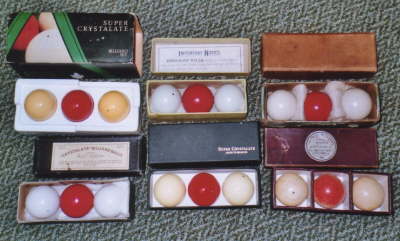Big break for George Chenier, and the fans
I recently received an e-mail asking for a valuation and a little additional historical information concerning a George Chenier cue.
For those of you who are unaware of who George Chenier was, well he was a Snooker player from Canada who was invited to England in 1950 by the legendary Joe Davis himself. It seems that they met while Joe was touring in Canada.
Mr Chenier took part in the World Snooker Championships of 1950 and promptly made a break of 144, this was considered a world championship record and brought a large degree of recognition for George. At the time George Chenier adopted a stance that was somewhat upright, yet he was still considered to be one of the premier break builders of his era.
I have seen a picture of him taken at around, the mid nineteen fifties, the remarkable thing was that he used a two piece cue.
I believe that Cliff Thorburn was encouraged by a number of meetings with George Chenier to come to England, I am sure that along with many of you, I would be pleased if this story were true.
In the Championship of 1950 George Chenier beat P Mans in his first match and then lost to Fred Davis in the next round, this was no disgrace as Fred went on to win the tournament.
Sadly George Chenier did not return to playing in the Championship but will long be remembered as one of the pioneers who came from countries outside the United Kingdom to take a tilt at the World Snooker Championships.
David Smith
Balls

John Roberts Junior We collectors are a weird breed you know, I have even gathered together a small collection of balls. I have: A set of Ivory Billiard balls Two sets of Crystalate Billiard balls A set of Super-Crystalate Billiard balls A set of Bonzoline Snooker Plus balls, 24 in all including the orange and…
Burwat Champion two piece cue in case
Burwat Champion two piece cue – original, in case https://youtu.be/quulfF053AU More posts about Burwat Champion cues: Photos of Burwat Champion cues:






